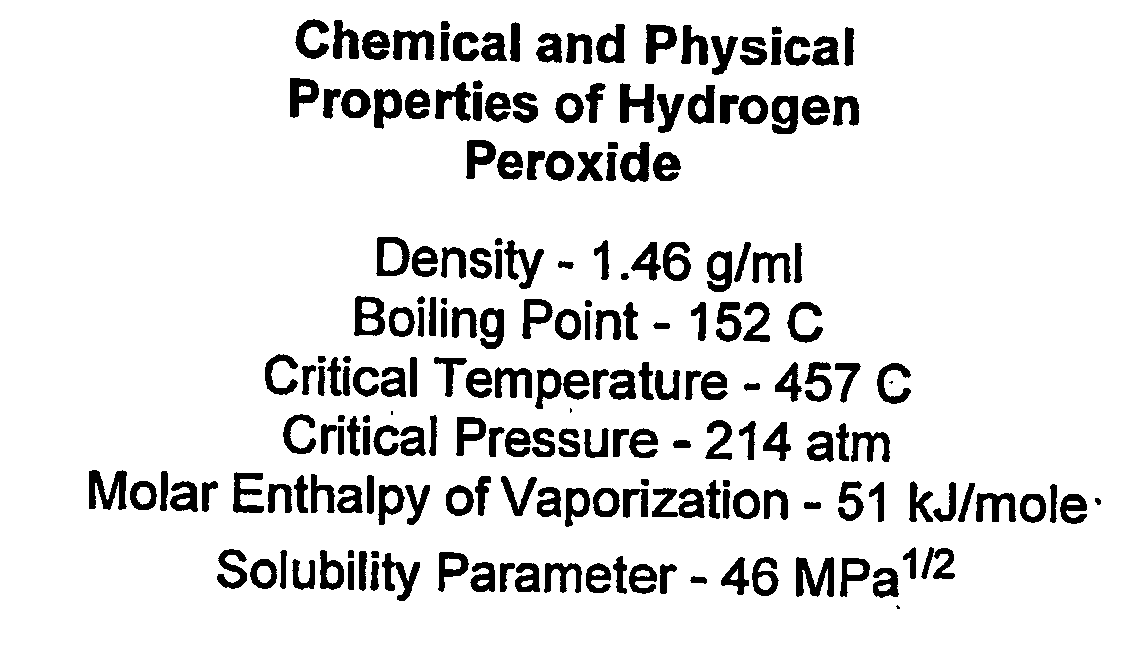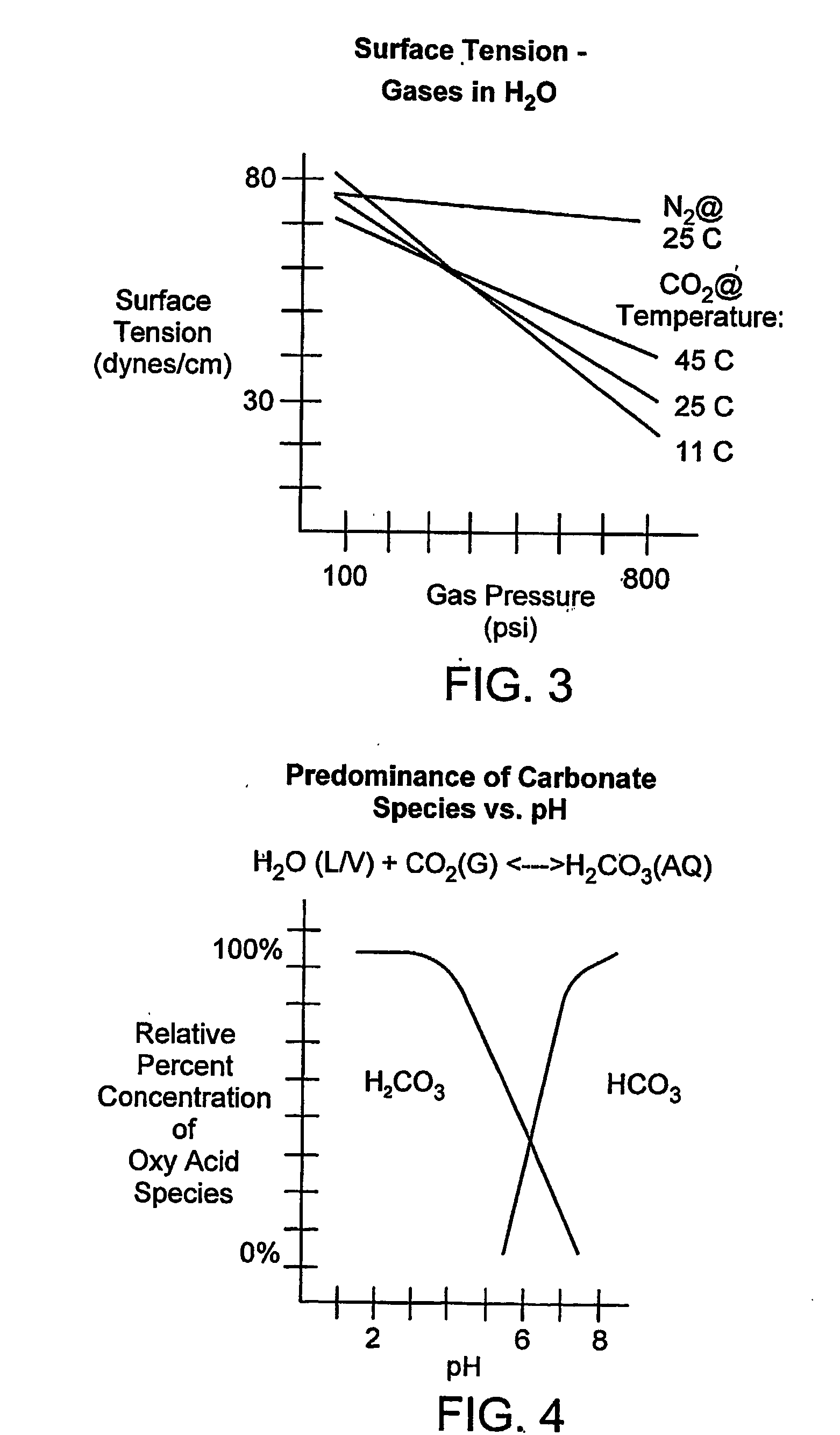Method, process, chemistry and apparatus for treating a substrate
a substrate and chemistry technology, applied in the direction of detergent compounding agents, cleaning using liquids, synthetic resin layered products, etc., can solve the problems of affecting the effect of abrasion, affecting the stability of the substrate, and not all devices and materials can withstand the extremely high temperature and pressure of steam,
- Summary
- Abstract
- Description
- Claims
- Application Information
AI Technical Summary
Benefits of technology
Problems solved by technology
Method used
Image
Examples
example 1
Sterilization
[0259] An efficacy test was performed using the percarbonic acid complex in a closed system to determine its effectiveness in inactivating (killing) spores used on various standard biological test indicators. In this test a biological challenge of 106 B. Subtilis and B. Stearothermophilus spores was used.
[0260] Sporicidal screening tests were performed using a 1-liter closed reactor containing a vertical centrifuge basket and exemplary UV-Plasma energy sources similar to those described herein. Screening tests are performed generally in accordance with AOAC guidelines and methodology. Biocidal screening procedures involved the following materials and procedures: [0261] Biological Indicators (BI): [0262] a. Black Silk Suture Loops (SSL) inoculated with Bacillus Subtilis ATCC 19659 [0263] b. Porcelain Penicylinders (PP) inoculated with B. Subtilis ATCC 19659 [0264] c. Biological Indicator for Gaseous Hydrogen Peroxide inoculated with Bacillus Stearothermophilus ATCC 129...
example 2
Dimethylsilicone Drainage Tube
[0270] In this example, a dimethylsilicone drainage tube is extracted with 98% supercritical carbon dioxide-2% hydrogen peroxide PCA (v:v) extraction mixture to remove interstitial silicone monomers and other ionic contaminants. Pre-cleaning removes residual organic, inorganic, and ionic extractable contaminants to prepare the substrate surfaces for an effective follow-on UV-Plasma PCA sterilization step. Following pre-cleaning, the substrates are CPSA vacuum dried to remove residual pre-cleaning residues and then processed using a UV-Plasma CPSA PCA process described herein to remove or decompose residual surface contamination and bacteria. Following this treatment process, clean-sterile substrate surfaces are subjected to an additional UV-Plasma treatment sequence using carbon dioxide and nitrogen gas to produce a functionalized surface having a high surface free energy.
example 3
[0271] In this example, a polyester grafting fabric is extracted with 98% liquid carbon dioxide-2% hydrogen peroxide PCA (v:v) extraction mixture to remove interstitial silicone monomers and other ionic contaminants. Pre-cleaning removes residual organic, inorganic, and ionic extractable contaminants to prepare the substrate surfaces for an effective follow-on UV-Plasma PCA sterilization step. Following pre-cleaning, the substrates are CPSA vacuum dried to remove residual pre-cleaning residues and then processed using a UV-Plasma CPSA PCA process described herein to remove or decompose residual surface contamination and bacteria. Following this treatment process, clean-sterile substrate surfaces are subjected to an additional UV-Plasma surface treatment sequence using carbon dioxide and nitrogen gas to produce a functionalized surface having high surface free energy. This device is then pressure impregnated with a commercial anti-coagulant agent, UV-Plasma ...
PUM
| Property | Measurement | Unit |
|---|---|---|
| pressure | aaaaa | aaaaa |
| pressure | aaaaa | aaaaa |
| temperature | aaaaa | aaaaa |
Abstract
Description
Claims
Application Information
 Login to View More
Login to View More - R&D
- Intellectual Property
- Life Sciences
- Materials
- Tech Scout
- Unparalleled Data Quality
- Higher Quality Content
- 60% Fewer Hallucinations
Browse by: Latest US Patents, China's latest patents, Technical Efficacy Thesaurus, Application Domain, Technology Topic, Popular Technical Reports.
© 2025 PatSnap. All rights reserved.Legal|Privacy policy|Modern Slavery Act Transparency Statement|Sitemap|About US| Contact US: help@patsnap.com



